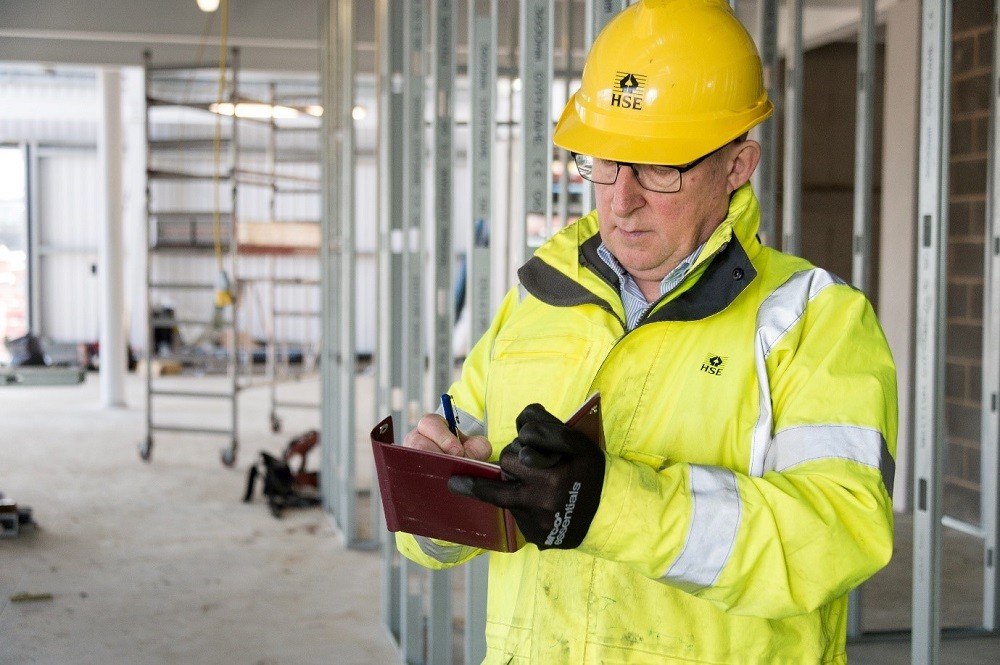Demystifying HSE and its crucial role in keeping Britain’s construction sites safe – here’s what every builder needs to know
Understanding HSE: The Foundation of Construction Safety
In the UK construction industry, HSE carries two vital meanings that every professional needs to understand. First and foremost, HSE stands for Health, Safety and Environment, representing the fundamental principles that protect workers and the environment on construction sites. Additionally, HSE refers to the Health and Safety Executive, Britain’s national regulator for workplace safety. This dual meaning reflects the comprehensive approach to safety in UK construction, where principles and enforcement work hand in hand to create safer working environments. Understanding HSE is crucial because construction remains one of Britain’s most hazardous industries, with over 50,000 work-related injuries reported annually. Whether you’re a site manager, contractor, or tradesperson, a thorough grasp of HSE principles and regulations is essential for legal compliance and, more importantly, for protecting lives.
The Health and Safety Executive: Britain’s Safety Watchdog
The Health and Safety Executive serves as Britain’s premier workplace safety regulator, wielding significant authority in the construction sector. Established by the Health and Safety at Work Act 1974, the HSE has the power to inspect sites, issue improvement notices, halt dangerous work, and prosecute violations. In 2023, the HSE conducted over 15,000 construction site inspections and issued fines totalling more than £12 million for safety breaches. The organisation employs specialist construction inspectors who understand the unique challenges of the industry and work proactively with businesses to improve safety standards. Key responsibilities include:
- Conducting unannounced site inspections and investigations
- Providing guidance and advice on safety regulations
- Enforcing health and safety legislation
- Investigating serious accidents and fatalities
- Publishing safety alerts and industry guidance
- Prosecuting serious breaches of safety laws
HSE Management Systems in Construction
Effective HSE management systems are the backbone of safe construction operations. These systems integrate health, safety, and environmental considerations into every aspect of project planning and execution. A robust HSE management system typically encompasses risk assessments, safety protocols, training programmes, and emergency procedures. The system should follow the Plan-Do-Check-Act cycle, ensuring continuous improvement and adaptation to changing site conditions. Key components include:
- Comprehensive risk assessment procedures
- Clear safety policies and procedures
- Regular safety training and competency assessments
- Incident reporting and investigation protocols
- Environmental impact assessments
- Emergency response planning
Key HSE Requirements for Construction Sites
Construction sites must comply with numerous HSE regulations, with the Construction (Design and Management) Regulations 2015 (CDM 2015) being particularly significant. These regulations place specific duties on all parties involved in construction projects, from clients to contractors. Essential requirements include:
- Appointing competent principal designers and contractors
- Ensuring adequate welfare facilities are available
- Maintaining a safe site with appropriate signage and barriers
- Providing suitable Personal Protective Equipment (PPE)
- Implementing proper scaffolding and work at height procedures
- Managing hazardous substances through COSHH assessments
- Reporting incidents under RIDDOR regulations
The Environmental Aspect of HSE
Environmental responsibility is increasingly crucial in construction HSE management. Modern construction projects must balance progress with environmental protection, implementing measures to reduce their ecological footprint. Key environmental considerations include waste management, pollution control, and resource efficiency. Construction sites must comply with various environmental regulations, including the Environmental Protection Act 1990 and the Environment Act 2021. Successful environmental management involves:
- Implementing effective waste segregation and recycling programmes
- Controlling noise and dust pollution
- Managing hazardous materials safely
- Protecting local wildlife and habitats
- Minimising carbon emissions
- Conserving water and energy resources
HSE Best Practices and Common Pitfalls
Success in HSE management requires learning from both best practices and common mistakes. Leading construction companies consistently demonstrate that proactive HSE management not only saves lives but also improves productivity and profitability. Common pitfalls often stem from inadequate planning, poor communication, or cutting corners to save time or money. Best practices include:
- Regular toolbox talks and safety briefings
- Comprehensive induction training for all site workers
- Clear communication channels for reporting concerns
- Regular equipment maintenance and inspection
- Detailed record-keeping and documentation
- Active worker involvement in safety planning
Digital Tools and Resources for HSE Management
The digital revolution has transformed HSE management in construction. Modern technology offers powerful tools for monitoring, reporting, and improving safety performance. Popular digital solutions include mobile apps for safety inspections, cloud-based document management systems, and wearable technology for worker safety. Key technological advances include:
- Digital risk assessment platforms
- Real-time incident reporting apps
- Online training and certification tracking
- Environmental monitoring systems
- Virtual reality training simulations
- Artificial intelligence for hazard prediction
The Future of HSE in Construction
The future of HSE in construction is being shaped by technological innovation, changing regulations, and evolving workplace cultures. Emerging trends include increased use of automation and robotics to reduce human exposure to hazards, greater emphasis on mental health and wellbeing, and the integration of sustainable practices into safety management. Industry experts predict several key developments:
- Greater adoption of AI and machine learning for risk prediction
- Enhanced focus on worker mental health and stress management
- Integration of sustainability goals with safety objectives
- Increased use of remote monitoring and digital twins
- Development of more stringent environmental regulations
Essential HSE Resources and Support
Successful HSE management requires ongoing access to reliable resources and support. The HSE website (www.hse.gov.uk) offers comprehensive guidance, while industry associations provide additional support and training. Key resources include:
- HSE’s construction information sheets and guidance documents
- CITB training courses and qualifications
- Construction Industry Advisory Committee (CONIAC) publications
- Professional body memberships (IOSH, NEBOSH)
- Local authority environmental health departments
- Industry-specific safety alerts and updates
FAQ
Who needs HSE certification?
Appropriate for those with jobs in occupational safety, compliance, or risk management. This information is pertinent to auditors, consultants, safety officers, and managers of health and safety. They are intended for those responsible for ensuring adherence to workplace safety and health regulations in businesses.
What is HSE in business?
A Health, Safety, and Environmental (HSE) management system that effectively mitigates risk and protects employees, contractors, and suppliers is critical for all companies.
Sources
[1] https://www.skytanking.com/news-info/glossary/hsse-hse-health-safety-security-environment/
[2] https://www.optial.com/resources/what-is-hse
[3] https://www.atfsolutions.com/what-does-hse-stand-for-in-health-and-safety


Leave a Reply